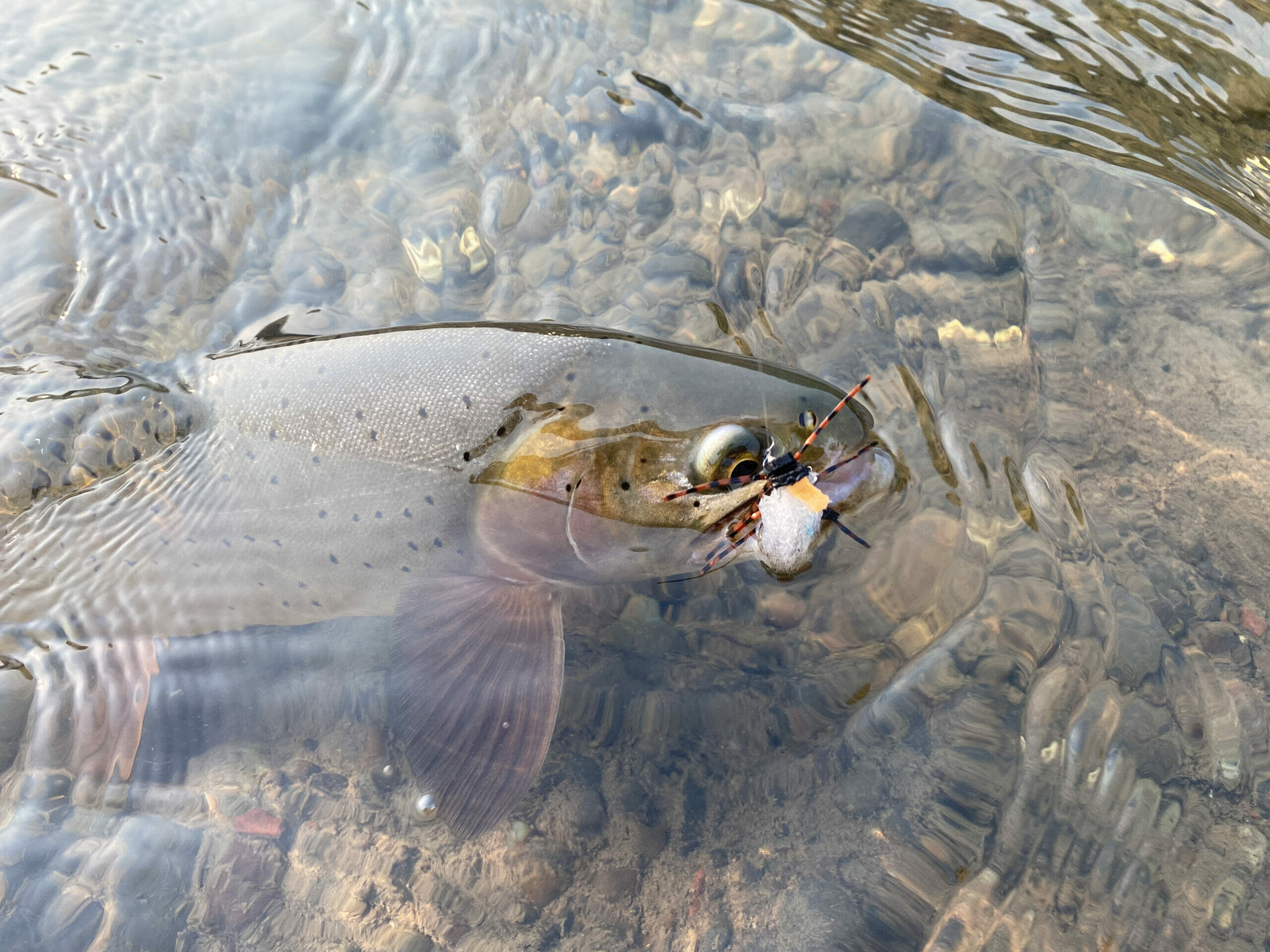Yellowstone cutthroat trout (Oncorhynchus clarkii bouvieri)
Species summary and Ssatus: The Yellowstone cutthroat trout occupies waters in Wyoming, Idaho, Montana, Utah, and Nevada.
Yellowstone cutthroat trout tend to be golden brown with relatively large, dark spots concentrated towards the tail. The fine-spotted cutthroat trout is another form of Yellowstone cutthroat trout, and as the name suggests, a dense distribution of small spots covers its flanks. This stunning fish lives alongside Yellowstone cutthroat trout in the Snake River drainage.
Yellowstone cutthroat trout have disappeared from a substantial portion of their historical range and are less abundant in some waters they still occupy. State and federal agencies assign Yellowstone cutthroat trout special status as “species of concern” or “sensitive species”.
Yellowstone cutthroat trout are native to the Yellowstone and Snake River watersheds, a distribution that crosses the Continental Divide. Historically, or pre-European settlement, Yellowstone cutthroat trout were present in an estimated 17,800 miles of stream. This distribution included large parts of Wyoming, Montana, Idaho, with a few streams supporting Yellowstone cutthroat trout extending into small portions of Utah and Nevada. Yellowstone Lake, at 90,000 acres, was by far the largest lake available to Yellowstone cutthroat trout.
In streams and rivers, Yellowstone cutthroat trout have habitat similar requirements to most trout, but they are more sensitive to habitat damage, warmer water temperatures, and sedimentation than nonnative trout.
Yellowstone cutthroat trout are spring spawners and spawn from May through July. Yellowstone cutthroat trout are locally adapted to the waters in which they evolved, so populations vary in timing of their spawning runs, the habitat they select, and the factors that cue their spawning.
Looking forward: Threats to Yellowstone cutthroat trout come from several fronts and often act together in making streams and lakes less suitable for Yellowstone cutthroat trout. Humans have altered the biological, physical, and chemical environment in which Yellowstone cutthroat trout have evolved, and these changes are responsible for declines in the species.
Introduction of nonnative rainbow trout, brook trout and brown trout has been the most influential cause of decline of Yellowstone cutthroat throughout its historical range. Lake trout have devastated Yellowstone Cutthroat Trout in Yellowstone Lake.
In the mid-1990s, lake trout began to be caught in Yellowstone Lake. This nonnative species threatened not only the highly valued Yellowstone cutthroat trout, but also the community of animals that coevolved with the native trout. Yellowstones are more available to mammalian and avian predators than nonnative lake trout, as lake trout occupy deeper water and spawn within the lake, out of reach of predators. Yellowstone cutthroat trout numbers plummeted as the voracious lake trout feasted on this population that did not coevolve with predaceous fish. The annual spring spawning runs of Yellowstone cutthroat trout into streams feeding the lake crashed, leaving grizzly bears, otters, bald eagles, and osprey without their essential food supply. Aggressive lake trout removal actions have been in place for decades and are gaining ground against this voracious predator. The Yellowstone cutthroat trout population is on the rise, and their predators are returning. Nevertheless, lake trout control will need to continue in perpetuity if we are to protect this precious natural resource in our first national park.
Securing Yellowstone cutthroats for future generations to enjoy requires a diversity of actions that address the factors contributing to their decline. Educating the public is essential in the conservation of Yellowstone cutthroat trout, as informed people are more likely to value natural resources. Conservation partners are diverse, with state and federal agencies, nonprofit groups, private industry and private landowners being key players. As 50 percent of the remaining Yellowstone cutthroat are in waters on private land, and recreational use of Yellowstone cutthroat trout and the waters it inhabits is substantial, partnerships are essential in effective conservation.
Between 2007 and 2020, the Western Native Trout Initiative provided $605,146 in funding to 27 projects to benefit Yellowstone Cutthroat Trout. Projects have included barrier construction and restoration, habitat restoration, fish passage, telemetry studies, and public outreach and education.
All data compiled from:



